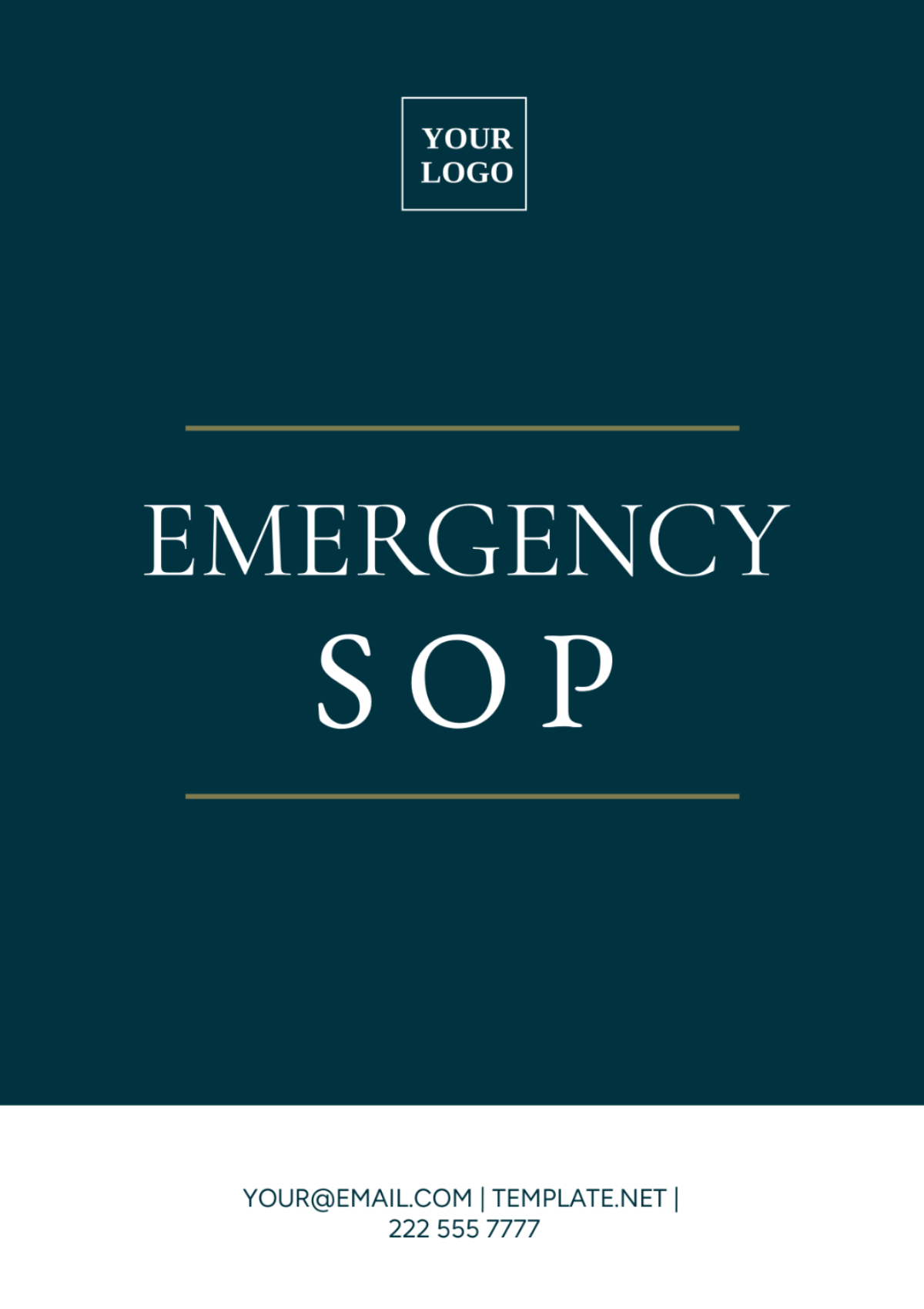Emergency Standard Operating Procedure (SOP)
I. Objective
The objective of this Emergency Standard Operating Procedure (SOP) is to provide detailed guidance and step-by-step instructions for handling various emergencies within [Organization Name]. This SOP aims to mitigate risks, ensure safety, and maintain continuity of operations during emergencies such as fires, natural disasters, medical emergencies, or security threats.
II. Scope
This Standard Operating Procedure applies to all the employees, contractors, and visitors who are present within the premises of [Organization Name]. Moreover, it also extends to those involved in any activities related to [Organization Name] that take place outside of normal working hours.
III. Responsibilities
Safety Team: The individual in this role takes on the responsibility of developing, updating, and consistently spreading awareness about this Standard Operating Procedure (SOP). Moreover, they also hold the duty of coordinating activities related to emergency drills, managing various training programs, and enhancing awareness-related endeavors.
Managers/Supervisors: It is essential to make certain that all employees are not only familiar with the emergency procedures that are relevant to their roles but they should also be adequately trained on how to implement these procedures effectively in case of any unforeseen emergencies, to maintain safety within the workplace.
Employees: Ensure that you adhere to the emergency procedures as they are specifically outlined in this Standard Operating Procedure (SOP). In addition, it is crucial to actively participate in all scheduled drills and training sessions related to these emergency procedures.
IV. Emergency Types and Procedures
4.1 Fire Emergency
Activation: Upon discovering a fire or hearing the fire alarm, immediately activate the nearest fire alarm pull station and evacuate the building following designated evacuation routes.
Evacuation: Proceed to designated assembly points outside the building and await further instructions from designated personnel.
Fire Suppression: Only trained personnel should attempt to use fire extinguishers if safe to do so. Do not attempt to extinguish large fires; evacuate immediately.
4.2 Natural Disaster Emergency (e.g., Earthquake, Flood)
Drop, Cover, Hold On: In the event of an earthquake, drop to the ground, take cover under a sturdy object, and hold on until the shaking stops.
Evacuation Routes: Be familiar with primary and alternative evacuation routes in case of flooding or structural damage.
Assembly Points: Proceed to designated assembly points away from buildings and potential hazards.
4.3 Medical Emergency
Assessment: Before you begin to provide any assistance, it is crucial to comprehensively assess the situation at hand. Also, ensure that your safety is sufficiently secured.
Emergency Contacts: Call emergency medical services (EMS) immediately and provide necessary first aid within trained capabilities.
Medical Kits: Know the location of first aid kits and AED devices within your work area.
4.4 Security Threat Emergency (e.g., Active Shooter, Bomb Threat)
Run, Hide, Fight: Follow the "Run, Hide, Fight" protocol if confronted with an active shooter. Evacuate if safe, hide if evacuation is not possible, and as a last resort, take actions to incapacitate the threat.
Bomb Threat: Evacuate the building if a bomb threat is received or follow designated shelter-in-place procedures if evacuation is not safe.
V. Continuity of Operations
Critical Functions: Identify critical functions and resources necessary for the continuity of operations during emergencies.
Alternate Facilities: Determine alternate work locations or methods to ensure essential operations continue.
Communication: Establish communication protocols to keep employees, stakeholders, and emergency responders informed during emergencies.
VI. Training and Drills
Regular Training: Conduct regular training sessions for employees on emergency procedures relevant to their roles.
Emergency Drills: Schedule and conduct emergency drills (fire drills, evacuation drills) to assess response effectiveness and identify areas for improvement.
VII. Document Control
Version Control: Ensure this SOP is kept up-to-date with the latest revisions and version control maintained.
Distribution: Distribute copies of this SOP to all employees and ensure accessibility during emergencies.
Review and Update: Review and update this SOP annually or as needed based on changes in organizational structure, facilities, or regulations.
Standard Operating Procedures Templates @ Template.net






























